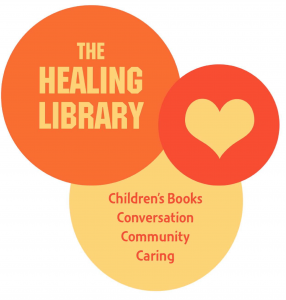
Family Materials
Coping with Childhood Anxiety
Stratford Parents’ Place and the Stratford Library Children’s Department acknowledge that this project is made possible in part by the Institute of Museum and Library Services under the provisions of the Library Services and Technology Act, administered by the Connecticut State Library, and a Community Impact Grant from the Stratford Rotary Club.
Welcome, friends.
This kit has been designed for your family’s use when a child is experiencing anxiety. Most books and activities are for younger children, but older children may also benefit from them. For a printable version of this kit (PDF), click here.
Inside you will find:
- Discussion Guide
- Healing Activities
- Acts of Kindness
- Community Resources
- Children’s Books with Discussion Guides
- Annotated Bibliography
This combination offers you several ways to move forward in a healthy manner. A variety of art materials have been included that you’re welcome to use for projects listed in the Activities Guide.
The Healing Library originated with a team of people that includes a children’s librarian, a licensed children’s counselor specializing in art and play therapy, a children’s literature advocate, and a programming librarian. The Healing Library model was replicated by a partnership with Stratford Parents’ Place Family Resource Center and Stratford Library Children’s Department. With the help of partners such as Stratford Community Services, it was customized for the Stratford Community. This kit is available at both Stratford Parents’ Place, located at Stratford Academy/ Johnson House, 719 Birdseye Street, Stratford CT, 06615, 203-381-6992 or at the Stratford Library Children’s Department located at 2203 Main St, Stratford, CT 06615, 203-385-4165. This kit can be borrowed for 3 weeks, but if you need additional time, please call us.
Please let us know if there is any material you would like us to copy for you.
This kit is designed to start your journey of healing, but not complete it. All family situations are unique and special, the process experienced by you and your children will also be unique. The enclosed material and Community Resources guide will assist you in taking your next steps. Thank you for taking this step in your healing process. We wish you peace.

Discussion Guide – Coping with Childhood Anxiety
Childhood anxiety can worsen as children grow. Left untreated anxiety can impact both physical and emotional health. Here’s how to help your child manage anxiety on their own.
Helping Kids with Anxiety: Strategies to Help Anxious Children
Article by Margaret Jaworski, Medically reviewed by Caroline Buzanko, PhD
https://www.psycom.net/help-kids-with-anxiety
Fathers bravely patrolling the perimeter of bedrooms (trusty flashlight in hand) to show a frightened child there aren’t any multi-legged, hairy creatures hiding under their bed is a nighttime ritual regularly performed in homes around the world. But when spider anxiety prevents you from sleeping away from home or traveling, that’s a problem. It’s not the spider that stops you from doing adventurous things; it’s you—and your anxiety—that stops you.
It’s important to know the difference between normal anxiety and an anxiety disorder though. Fear of spiders, bugs, birds, monsters, or strangers are considered common childhood fears that may cause temporary anxiety in a child. That’s a normal response. But, regardless of the trigger (spider, dog, going to school, meeting new people), normal anxiety turns toxic when it begins to occupy the child’s thoughts in an all-consuming way and negatively affects the child’s ability to engage in normal activities and behaviors.
Normal Anxiety or Anxiety Disorder? How to Tell the Difference
Every person, child, and adult, is going to feel anxious at some point, says Eli R. Lebowitz, PhD, director of the Program for Anxiety Disorders at the Child Study Center, Yale School of Medicine. Anxiety is a normal emotion that has a dual purpose. “It prevents us from doing something dangerous and can motivate us as well,” says Mary K. Alvord, PhD, director of Alvord, Baker & Associates, a psychotherapy practice that specializes in the treatment of children, adolescents and adults with anxiety and other disorders. For example, anxiety might motivate a child to practice the piano for his recital or be the “encouragement” a child needs to do their homework so they can be prepared for class.
What differentiates normal from problematic anxiety is the degree to which the anxiety “interferes with functioning that you would expect for a child of [a particular age] or developmental stage,” says Alvord. Children with anxiety disorders inevitably begin to “avoid situations, things, people, and places that make them anxious,” says Alvord. “Avoidance is the hallmark of anxiety disorders.”
Causes of Childhood Anxiety Disorder
According to the National Institutes of Mental Health (NIMH), “both genetic and environmental factors contribute to the risk of developing an anxiety disorder.” Research shows that biology, biochemistry, life situations, and learned behaviors all play a role. “Many anxious kids have anxious family members,’ says Alvord. “Children model behaviors on what they see,” she adds.
And then there’s the genetic component. Anxiety disorders do run in families but a family history doesn’t mean a child is destined to develop a disorder. “Parental behavior can exacerbate and worsen children’s problem but that’s not the same as saying that parents are the cause of the child having the problem in the first place,” Lebowitz says.
Much depends on the child’s innate sensitivity, family dynamics, and life experiences. “Some children have a natural predisposition or vulnerability to anxiety or have difficulty regulating their feelings of anxiety and fear. And that’s not because their parents did this or didn’t do that,” stresses Lebowitz, “That said, parents can and should play an important role in helping children learn to cope better with their anxiety.”
Reading the Signs: What Anxiety Looks Like in Children
Anxiety disorders reveal themselves in physical and psychological ways. How an anxiety disorder manifests depends on the age of the child and the type of anxiety disorder. Because anxiety can manifest through physical symptoms, it’s important to consult a pediatrician to make sure the behaviors and symptoms are anxiety-related and not due to an underlying medical condition.
Some general symptoms:
- With toddlers and young children, parents may notice increased irritability, excessive crying, tantrums as well as more difficulty self-soothing or self-regulating.
- Young children may exhibit regressive behaviors such as bed-wetting (assuming the child is toilet-trained) or excessive clinginess.
- In all age groups, children with anxiety disorders may exhibit physical symptoms such as stomach and headaches, frequent bathroom urges, rapid breathing, chest pains, shortness of breath, nausea and vomiting, poor appetite, muscle aches, and tension and sleeping difficulties. Some children have bouts of gagging and choking.
- Psychological and behavioral symptoms include frequent reassurance-seeking, needing things done exactly the same way and in the same order (rigidity), feeling irrationally threatened or overwhelmed by new experiences; avoiding any situation— school, people and places, events, social gatherings—triggers or fuels their anxiety.
- Hypervigilance means the child is on high alert and constantly monitoring their environment and keeping tabs on everything going on around them. Hypervigilant children often misinterpret innocuous cues as signs of danger. While surveilling the room is a useful talent for spies, for a child, it’s exhausting.
Types of Anxiety Disorders in Children
Separation Anxiety: Excessive worrying that something bad will happen if the child is not with their parents, caregiver, or anyone to whom they are attached. The child may be reluctant or refuse to stay at a relative or friend’s house, sleep alone or go to school. Many children experience separation anxiety between 18 months and three years old when it is normal to feel some anxiety when a parent leaves the room or goes out of sight. Usually, children can be distracted from these feelings. However, separation anxiety may surface or resurface when the child is older and especially between ages 7 and 9.
Generalized Anxiety Disorder: Chronic anxiety and excessive worry about everything and everyday life. A child with GAD worries about the meaning of a canceled play date or a delayed response to a text. Children with GAD fret about bad things happening to people they love or that no one will come to the birthday party they didn’t want in the first place. The worry is overblown in relation to the events that sparked the worry. GAD is exhausting as children worry chronically and constantly and can’t control these thoughts. In addition, children with GAD often don’t trust their instincts and seek constant approval or reassurance from others.
Panic Disorder: Imagine being ten years old and suddenly, without warning, experiencing a fear so intense that you feel like you’re going to pass out. Your heart is pounding. You are terrified and feel out of control. You may experience shortness of breath and chest pain. That’s a panic attack.
A panic attack usually lasts about 15-30 minutes (peaking at 10 minutes) whereas the resulting fear of another attack persists and that fear of panic returning is what triggers avoidance behavior to avoid another attack.
Phobias: While these irrational, persistent fears can be sparked by an actual incident; being charged by a dog may lead to canine phobia, for example, most phobias emerge without a prior incident. Children can develop phobias about situations, objects, places, and people. Once the phobia sets in, the child will avoid the object of their fear and exhibit distress behaviors such as crying, tantrums or have a meltdown if exposed to it.
Social anxiety disorder: Characterized by intense fears or worries about being judged by others, children with social anxiety disorder agonize about how others perceive them. Often, they fear looking foolish or being embarrassed in front of their peers. This disorder is particularly destructive as it can affect the child’s willingness to attend school or participate in the classroom and can thwart normal socialization with peers and get in the way of making friends.
Selective Mutism: Not one of the common anxiety disorders, selective mutism is when a child speaks comfortably and normally with certain people—parents, siblings and close friends—but will not speak outside this inner circle. Often parents don’t see this behavior until a teacher alerts them that the child is not talking at school. On the positive side, children usually outgrow this anxiety disorder.
Obsessive Compulsive Disorder (OCD): Children with this disorder are plagued with distressing, anxiety-provoking thoughts, obsessions, and compulsions that are relieved, at least temporarily, by acting out ritual behaviors. A child’s fear of germs may lead to ritual, repetitive hand-washing for example. Other rituals include arranging objects symmetrically, checking and rechecking lights, doors, and locks. While performing the rituals temporarily alleviates the anxiety the intrusive thoughts return as does the compulsion to perform the ritual.
When should I seek professional help for my anxious child?
According to the American Academy of Pediatrics and our experts, you should consult a psychologist or psychiatrist with experience treating children with an anxiety disorder when the child’s behavior or anxiety:
- Disrupts the household and interferes with family activities and life
- When the child gets upset multiple times a day or week
- When the frequency and intensity of the fears escalate (may be accompanied by acting out, meltdowns, screaming, yelling, or tantrums).
- When the anxiety leads to significant avoidance behavior. The child continually and consistently makes excuses to avoid school or other situations that may provoke anxiety.
- When the disorder is making it difficult for the child to interact with, make or keep friends.
- When sleep habits are disrupted
- When you begin to see compulsive behaviors and rituals such as repeated hand washing, counting, checking things and when the child refuses or is unable to leave the house without performing these rituals.
- When your child shows a pattern of physical symptoms that are disruptive and detrimental to the child (vomiting, stomach aches, etc.)
- When your child experiences panic attacks characterized by heart palpitations, sweating, nausea, hyperventilation.
Treatment for Childhood Anxiety Disorders
If you suspect your child has a disorder, the first step is to see a trained therapist who will take a full history, talk with and ask questions of the parents, family members, and the child about the fears and behavior. The therapist can diagnosis the child’s specific anxiety disorder based on the information collected through these interviews.
Therapies for Anxiety Disorder
Cognitive behavioral therapy (CBT) is often described as the “gold standard” therapy for anxiety disorders, CBT is a short-term (usually 12 weeks) therapy whose core principle is that what we think, how we feel, and how we behave are all closely connected and together strongly influence well-being. During therapy sessions, children gradually grasp that what they think and do affects how they feel. They also learn how to challenge and question the validity of negative thoughts and replace them with positive ones. CBT helps kids understand that avoiding their fear makes the fear stronger while facing the fear will make the child stronger. The therapist helps the child practice techniques to help them face their worries and tolerate the associated anxiety and builds up their confidence through praise and through their accomplishments.
Through exposure to anxiety-producing situations, the child will be better able to tolerate anxiety-provoking situations and the associated worries. For CBT to be successful, the child must be willing to actively and consistently participate in the therapy and do the required exercises outside of sessions. For some children, especially young children, that can be challenging so it’s really important that the child and the therapist have a strong relationship.
Acceptance and commitment therapy (ACT) uses acceptance and mindfulness techniques to help children learn to live in the moment and without self-judgment as a way to ward off or cope with unwanted thoughts or behaviors. A key piece of being able to acknowledge worries is to be able to disentangle and distance themselves from them.
Dialectical behavioral therapy (DBT) is a variation of CBT. DBT focuses on helping those with anxiety disorders strengthen their ability to handle anxiety or distress without resorting to avoidance or overreacting to situations. In DBT, the emphasis is on helping the child take responsibility for their problems. DBT encourages them to talk about intense feelings and anxiety.
Supportive Parenting for Anxious Childhood Emotions (SPACE) is a parent-based program focused on changes parents can make to their own behavior to help children and adolescents with anxiety, OCD, and related problems. Developed by Lebowitz and his team at the Yale Child Study Center, the program helps parents learn how “respond to anxiety behaviors in a supportive way and to reduce the accommodation they have been making to ‘control’ or decrease their child’s symptoms.” According to a study published in the Journal of the American Academy of Child and Adolescent Psychiatry, the SPACE program is as “efficacious as individual Cognitive Behavior Therapy for the treatment of childhood and adolescent anxiety disorder.”
In his new book, Breaking Free of Child Anxiety and OCD: A Scientifically Proven Program for Parents Lebowitz presents the tools and techniques used in the program along with what to say and how to handle a child with an anxiety disorder. To find a SPACE provider visit https://www.spacetreatment.net/space-providers.
The good news is that anxiety disorders in children are treatable and there are different treatment choices. Often a combination of therapies is most helpful. And if the child still doesn’t improve medication is an option.
How to Help Kids with Anxiety
Parents have an important and essential role in helping children deal with anxiety disorders. One of the vital ways that parents can be instrumental in reducing a child’s anxiety is by not inadvertently reinforcing it. “Children’s natural response to anxiety is to rely on parents for help and that is a normal way that human beings respond to fear or anxiety when they are young,” Lebowitz explains “While an adult might respond to fear primarily with self-defense, the fight or flight response, children don’t have that capacity. They are programmed to respond to fear by signaling their parent (or caregiver) so that the parent can protect and soothe the child until the perceived danger has passed,” says Lebowitz. Parents, in turn, are “naturally hardwired to detect cues of fear in their children and to step in to provide that protection and emotional regulation,” he says.
However, a child with an anxiety disorder experiences anxiety even when the situations or circumstances don’t warrant that heightened response. “And what that happens the parent responds to the child’s distress through accommodation,” explains Lebowitz. “What that means is that to help the child, the parent responds differently to the situation than they normally would.”
For example, say a child with social anxiety exhibits discomfort or shows stress in what is a normal social situation such as, an outing to a theme park, or a kids’ party. Aware of the child’s uneasiness, the parent decides to stay nearby to provide reassurance. Another example: In a restaurant, the parent of the socially anxious child may speak for the child. “That’s accommodation,” Lebowitz explains. Rather than helping the child face their fear and anxieties, the parent is unintentionally enabling the child to avoid facing their anxiety.
The goal is to be supportive rather than accommodating says Alvord. “And it’s so important that we get that message out to parents,” she says. If you allow a socially anxious child to stay home from school or excuse them from family activities, you’re enabling avoidance, and doing so actually reinforces the anxiety.
“What being supportive means is that you don’t accommodate the anxiety. Instead, you help the child take small steps toward facing the fear. It’s important to listen to the child and validate that you understand that they may be feeling uncomfortable or fearful but you have faith in their ability to tolerate the discomfort,” says Alvord.
Equally important is to be honest with the child in an age-appropriate way and without overwhelming them with too much information. Children need information delivered in a way that doesn’t leave gaps in their understanding. When there are gaps, kids fill them in with their own beliefs which may be inaccurate and anxiety-producing. During COVID, for example, some children now consider the world beyond their own home as a dangerous place because they haven’t been given enough information. In general, children, especially young children need structure and predictability.
The need is heightened if your child has general anxiety disorder and worries constantly about everything. The child may obsess about what happens if Mom gets sick and can’t pick the child up from school. Rather than telling the child that Mom never gets sick, the parent can say, “I’m not sick but if I ever got sick, I’d work very hard to get well. And if I can’t pick you up, Aunt Jane will be there.” Or say you take the child to the doctor to get a shot. Don’t say, ‘it won’t hurt.’ Instead, say ‘it might hurt a little, but I know you’re brave and can handle it,’” advises Alvord.
And it’s important to pay attention to the negative effects that accommodating a child’s disorder can have on the rest of the family. If a child with social anxiety doesn’t want to go to a cousin’s birthday party, one parent must stay home so the other parent can take a sibling to the party. A child with separation anxiety won’t let his parents go out to dinner. While, at the moment, it may feel easier to accommodate the child, in the long run, accommodation fuels the anxiety disorder.
Anxiety in Children FAQs (Recap of above information)
What causes anxiety in children?
Research shows that biology, biochemistry, and environmental factors play a role. While anxiety disorders do run in families, a family history doesn’t mean a child is destined to develop a disorder. Much depends on the child’s nature, innate sensitivity, experiences, and family dynamics. For some children, stressful (moving, divorce, or a death in the family) or traumatic events (witnessing a car accident or domestic violence) can set off an anxiety disorder.
What does an anxiety disorder look like in young children?
Depending on the type of anxiety, there are a range of physical, psychological and behavioral indications. With toddlers and young children, parents may notice increased irritability, excessive crying, tantrums as well as more difficulty self-soothing or self-regulating. Young children may exhibit regressive behaviors such as bed-wetting or excessive clinginess. Children with anxiety disorders may experience stomach and headaches, frequent bathroom urges, rapid breathing, chest pains, shortness of breath, nausea and vomiting, poor appetite, muscle aches and tension and sleeping difficulties. Other indicators are: hypervigilance, frequent reassurance seeking, feeling r overwhelmed by new experiences; avoiding situations– school, people and places, events, social gatherings– pretty much anything that triggers or fuels their anxiety.
How common is anxiety in children?
Anxiety and anxiety disorders are considered the most common mental health problem in childhood. Separation anxiety is common in younger children, whereas older children and teenagers tend to worry more about school or have social anxiety. While OCD can occur at any age, in children it usually appears between the ages of six and twelve.
How can I help a child with anxiety?
There’s normal anxiety and then there are anxiety disorders. If you child has occasional anxiety that doesn’t disrupt their life, you can help them by acknowledging how they feel, helping them take control of their thoughts and behaviors. If the child has a real anxiety disorder, it’s important they see a child psychologist or other health care professional with expertise in dealing with anxiety disorders. Whether the anxiety is mild or more extreme, experts agree that it’s important that parents do not accommodate the child’s disorder. Be supportive, acknowledge what the child is feeling, talk to the child about the anxiety but don’t become an enabler. Changing your behavior to placate the child is what experts call “accommodation.” It may keep the peace now but in the long run, it will make things worse.
Kids and Anxiety: By The Numbers
- About 2.6 million American children and adolescents were diagnosed with anxiety and/or depression in 2011-12
- The prevalence of current anxiety increased from 3.5% in 2007 to 4.1 % in 2011-12,
- Median age of onset for anxiety is 11 years
- An estimated one in 20 American children has anxiety.
- Separation anxiety affects 4% of children
- There are at least 1 in 200—or 500,000—kids and teens that have OCD. In children, OCD tends to first appear between the age of 6 and 12.
Last Updated: Oct 18, 2021
Resources for Parents of Anxious Children
Anxiety and Depression Association of America
https://adaa.org/
American Academy of Child & Adolescent Psychiatry
https://www.aacap.org/
National Alliance on Mental Illness
https://www.nami.org/Home
Association for Behavioral and Cognitive Therapies
https://services.abct.org/i4a/memberDirectory/index.cfm?directory_id=3&pageID=3282
American Psychiatric Association
https://www.psychiatry.org/
Other Suggested Articles:
https://www.heretohelp.bc.ca/infosheet/talking-to-your-child-or-teen-about-anxiety
Good article for a teen struggling with anxiety.
https://childmind.org/article/what-to-do-and-not-do-when-children-are-anxious/
10 tips for helping your child.
https://www.npr.org/2019/10/23/772789491/how-to-help-a-child-struggling-with-anxiety
Includes the video: Cookie Monster’s Self-Control for Monsters.
https://www.katielear.com/child-therapy-blog/2019/12/12/3-coping-skills-kids-anxiety
Coping skills to use with your child.
https://health.clevelandclinic.org/11-signs-your-child-may-need-a-therapist/
How to tell if your child needs professional help.
Breaking Free of Child Anxiety and OCD: A Scientifically Proven Program for Parents by Eli R. Lebowitz. Oxford University Press, 2021.
Lebowitz presents the tools and techniques used in the program along with what to say and how to handle a child with an anxiety disorder. To find a SPACE provider visit https://www.spacetreatment.net/space-providers.
There’s a Bully in My Brain by Kristin O’Rourke, read by AmeriCorps member Tory Full
https://video.link/w/HUE5c

Healing Activities – Coping with Childhood Anxiety
Therapist (and Child)-Approved Activities to Support Kids with Anxiety
Adapted from the article by Ili Rivera Walter, PhD, LMFT
Family Therapy Basics – October 10, 2017
https://familytherapybasics.com/blog/2017/10/8/10-therapist-and-child-approved-activities-to-support-kids-with-anxiety
Here are ten activities that address anxiety-based disorders and promote relaxation and stress reduction in children:
1 Worry or “Reminder” Stones
 This activity is one that children will ask you to do again and again, and it will actually provide them with some comfort in their time spent away from you or their loved ones. Buy oven bake clay at your local craft store and have your child choose three or four colors that make them feel calm or happy. As they roll the colors into a ball and then gently push their thumb print into it, talk to your child about what this stone symbolizes for them; perhaps include a reminder to breathe, a positive thought, or a favorite mantra such as, “I can get through this.” After it is baked for 30 minutes at 250 degrees, it can be kept in their pocket and used in difficult moments as a reminder that they are safe an in control. You can make a worry stone as a transitional object for children who are having trouble separating.
This activity is one that children will ask you to do again and again, and it will actually provide them with some comfort in their time spent away from you or their loved ones. Buy oven bake clay at your local craft store and have your child choose three or four colors that make them feel calm or happy. As they roll the colors into a ball and then gently push their thumb print into it, talk to your child about what this stone symbolizes for them; perhaps include a reminder to breathe, a positive thought, or a favorite mantra such as, “I can get through this.” After it is baked for 30 minutes at 250 degrees, it can be kept in their pocket and used in difficult moments as a reminder that they are safe an in control. You can make a worry stone as a transitional object for children who are having trouble separating.
2 Calm Down Jars
Throw some warm water, glitter glue and glitter in a glass (or even better, plastic) jar and have your child shake up it up to watch the glitter slowly float to the bottom. It is incredibly soothing and relaxing to watch and kids can use it at home after a difficult or stressful moment. Encourage them to do some deep breathing as they watch as well incorporate some mindfulness. Smaller versions of the calm down jars can be made by using small plastic baby oil bottles and can be kept in the car or in Mom’s purse for a quick relaxation tool on the go.
3 Positive Mantra Bracelet 
Making positive mantra bracelets is a simple but fun way to get kids talking about positive thinking and, more specifically, which mantras best apply to them and their worries. Start by opening up a discussion about the things they worry about most and help them come up with three or four mantras they can repeat to themselves in an anxious moment, such as “I am safe,” “Mom will always come back,” or “My best is good enough.” Assign each mantra to a different color bead, and have them string them onto a pipe cleaner or lanyard to be worn on their wrist as a daily reminder to think positive thoughts and breathe. The soft pipe cleaner and smooth, sliding beads also function as an awesome yet discreet fidget for tactile-seeking little ones.
4 Worry Box
Very often kids can feel as though they are controlled by their anxious thoughts and feel helpless in stopping them. You may notice that your child cannot stop talking about certain topics, and feel frustrated that you don’t have enough time in your day to address the child’s concerns. A great activity for kids struggling with Generalized Anxiety Disorder is creating a “worry box.” This activity can be as simple or as elaborate as you would like. Have your child decorate a box however they like–with modge podge, glitter, markers, stickers, etc. As they are crafting their box, explain that the box will be a spot in which they keep their worries when they don’t have the time to think about them. They write their worry on a piece of paper and place it in a box to be addressed at a later time. This gives children a sense of control over their anxiety, and you can set aside a certain time of day to talk to your child about their fears. When they no longer feel as though they need to address a certain worry that is in the box, the piece of paper can be ripped up and thrown in the garbage, which is a therapeutic activity in itself.
Here is a video by That Counselor Couple how it works: https://video.link/w/9b5Lc
5 Butterflies in the Belly
This butterfly in my belly activity is an adorable and non-threatening way to open up discussions with kids about their worries or fears. Cut out butterflies of all different sizes in advance and trace your child’s head and torso on a large piece of oak tag. Talk to your child about the physical sensations they feel in their body when they feel worried, such as butterflies in their belly. Ask them to write down different things they stress about on the butterflies and use the various sizes for big or little worries. End with a discussion about what calm down strategies to use when the “butterflies in their belly” show up and write them down in a butterfly net to symbolize “catching the butterflies”.
6 Create a Journal
Many children have a hard time expressing themselves. It’s important to explain that they do not have to talk about their worries or stress if these topics make them uncomfortable, but they do have to find a different outlet for expressing themselves. Have your child decorate a journal that is personal to them using stickers, markers, or even magazine cut-outs of positive phrases, and encourage them to journal when they first sit down with you as well as during times between sessions.
7 Slime
Slime is all the rage lately and a quick google search will produce hundreds of recipe variations. The cool part about making slime is that kids find the process super fun, but it is also an awesome therapeutic tool for sensory-seeking kids. Add some lavender oil into the slime as an additional bonus to calm them as they play. Just a few minutes of running the slime through their fingers can bring a child’s baseline level of anxiety down a few notches.
 8 Worry Dolls
8 Worry Dolls
Worry Dolls are little dolls originally made in Guatemala. The idea is simple – if at night you find yourself worrying about things (and worries have a habit of bothering you when you are trying to sleep), you tell your worries to these little dolls and place them under your pillow. The traditional worry dolls are very small, made from things like (used) match sticks and scraps of fabric. Since then, there are lots of variations of making these bright and colorful worry dolls. You can make these using clothes pins, small sticks, lollypop sticks, Popsicle sticks, or cardboard pieces stuck together. With glue, dress the worry dolls in fabric scraps. You can also wrap yarn or embroidery floss around the sticks. Use markers to draw faces, if you want. Make them big or small, to suit your child’s needs.
9 Stress Balls
Fill a balloon with flour, rice, or beans using a small funnel. Tie the end and double wrap it into another balloon for extra security. Stress balls make for a great fidget for nervous kids.
10 Put Them All Together and Make a Calm Down “Toolbox”
A great way to support and empower kids to self soothe is to help them make a calm down “toolbox” with items that have been mentioned in this article. It is important to explain that what may help to calm us down one day may not work the next, which is why they need many “tools” in their tool box. Have a realistic conversation with them about what helps them calm down when they are feeling anxious, and place those items in the box. Kids may also include bubbles, a photo album filled with happy memories, a stuffed animal, gum, a coloring books and crayons, or other items. You can also make a list or key ring of strategy ideas that may not “fit” into the box, such as taking a bath or going for a walk.
About the Author
Kristin O’Rourke is a licensed clinical social worker and author of There’s a Bully in My Brain, with over fifteen years of experience supporting children and families with anxiety disorders and behavioral issues. She is the owner of In-Home LCSW, PLLC, a private group practice that provides home and office based counseling services to children and families in New York and New Jersey. Find her on Facebook at In-Home LCSW, PLLC, on Instagram @inhomelcsw or on her website at www.inhomelcsw.com
Also – Just Breathe
Several of the books in this kit mention deep or “belly” breathing. In Worries Are Not Forever, Elizabeth Verdick describes it this way:
“Breathe in slowly through your nose like you’re smelling cookies.
Breathe out slowly through your mouth like you’re blowing bubbles.”
It may help to have some bubble solution available for kids to play with when they feel stressed.

Acts of Kindness – Coping with Childhood Anxiety
How Practicing Kindness Can Help Your Anxious Child
by Jenny Friedman, Executive Director
https://www.doinggoodtogether.org/dgt-newsletter/how-kindness-helps-anxious-child
More and more, researchers are finding that practicing kindness and serving others are good for mental health. Studies show that volunteering leads to greater life satisfaction; performing acts of kindness makes people happier and more socially comfortable; and helping others boosts daily well-being. If your child tends to be anxious, you can’t make it magically go away, but you can offer tools to manage their discomfort, and strategies to help them cope. “Doing for others” can be one such strategy. See whether the following ideas could be antidotes for your child’s worries.
ACTION
Act small. Performing even small acts of kindness can improve people’s moods. In studies, simple helping behaviors were associated with higher levels of daily positive emotion and better overall mental health.
Try this: When you’re out with your child, pay for the people in line behind you at the coffee shop, say hi to someone in an elevator, hand a flower to a stranger, hold the door open for someone with their hands full, tape coins around a playground for kids to find, or simply smile at each person you meet. Want more? Try one of DGT’s kindness challenges: https://www.doinggoodtogether.org/bhf/30daykindnesschallenge
Share a superpower. What are your child’s talents, skills, and passions? Sharing them can enhance self- esteem, bring joy — and cheer others.
Try this: Is your child an artist? Create cards for hospitalized kids or troops overseas or draw pictures to brighten the day of folks who are isolated. A baker? Make treats and share them with friends, neighbors or a local fire station. A musician? Have a recital for appreciative seniors at a local care facility.
Help outside. Researchers have shown a strong connection between being outside and a reduction in depression and anxiety.
Try this: Rake the neighbor’s yard, pick up litter in your park, or volunteer with an environmental organization to plant trees, pull invasive species, or work in a community garden.
Meditate on loving kindness. Studies show that loving kindness meditation not only increases compassion but also boosts positive emotions, increases life satisfaction and decreases symptoms of depression.
Try this: Share this simple guided meditation with your child. You can slowly increase the amount of time they sit as they get older – and more experienced.
Give compliments. Getting genuine compliments can boost our well-being, of course, but researchers are finding that giving genuine compliments also has the power to lift our mood.
Try this: In the morning, give your child a compliment, then task them with giving three sincere compliments to people they see throughout the day. At dinner, have everyone share what kind of reaction they got.
Focus on giving. If your child is facing a stressful situation, consider changing their perspective by putting the focus on others. This allows them a healthy distraction from their own anxiety.
Try this: Does your son fear dogs? Make fleece chew toys, donate them to a shelter for rescued dogs, and talk about how animal emotions can be similar to human emotions. If you begin to sense worries about starting back to school, take your child to pick out school supplies for a child in need, and talk about how the child will feel to get them. https://www.doinggoodtogether.org/bhf/create-pet-toys
Have a giggle. Everyone in the family having a tough day? The best cure just might be a little silliness.
Try this: Gather some colored chalk and go out and write jokes and uplifting messages on the sidewalk. Sip hot chocolate at a nearby coffee shop while creating funny car window poetry to share with random drivers. https://www.doinggoodtogether.org/bhf/blog/the-power-of-poetry?rq=car%20window%20poetry
CONVERSATION
Being kind and generous can improve your child’s mental health, especially when you point out the difference he or she is making for others. Here are some ways to help children see their impact.
- Tell stories from the past about times you’ve remembered your child being especially helpful and brave.
- Point out the reaction to your child’s acts of kindness: “When you brought those cookies to Mr. Alvarez next door, he seemed so pleased and excited to get your homemade treats.” Then repeat the story to others when your child is within earshot.
- When you see someone doing something kind, bring it to your child’s attention. “Did you hear the woman compliment the clerk’s necklace? I bet that made the clerk feel good.”
- Ask questions that help your child understand the recipient’s point of view: “How do you think the soldiers overseas will feel when they see the card you made?”
- Think of other ways you can spread joy, such as tying happy messages on trees, leaving May baskets on neighbors’ doorknobs, or planting bee-loving flowers.

Community Resources – Coping with Childhood Anxiety
The following are resources you can explore in a face to face setting and others are for you to look up online. This list is not all inclusive. Finding support is an individualized approach and sometimes finding the right fit can take some time. These resources are suggestions for starting points.
211 Infoline
In Connecticut, support help can be found through community resource directories including CT 211 Infoline. Dial 2-1-1 or search online at www.211ct.org. If you are outside of Connecticut or have a problem using the 2-1-1-number, dial 1-800-203-1234. 211, select option 1 for CT mobile crisis for 18 years and under.
National Suicide Lifeline- 800-273-8255
Crisis Text Line- Text “Home” to 741741
Teachers & Staff
Informing your child’s teacher about your child’s situation will be important. Your child may exhibit a change in behavior and the teacher will need to know why this is happening. In addition, you can gain insight into your child’s emotional journey with the insight the teacher has about times when you aren’t around. In addition to the teacher, your child may also have a special bond with someone from administration, someone who works in the school office, or a staff member who works in the cafeteria or on the custodial crew. If your child expresses the wish to discuss their feeling with these people, it’s fine for you to approach them to ask if they would feel comfortable.
School Social Worker/Counselor
If your child requires additional support, we recommend you reach out to a counselor such as your school’s social worker. These individuals are skilled in providing counseling services to their students and can help your child begin to make sense of their emotions. The amount of time these professionals have available to help your child will vary. They are also able to provide resources and referrals for parents seeking additional information.
If you decide to seek support elsewhere, alerting your school guidance counselor or social worker to may help them understand what your child is experiencing. If your child already receives social work services at school, per an IEP (Individual Education Plan) or 504 Plan, you may want to inform that social worker so they can be better prepared to support your child during this time. To find your school’s social worker or counselor, check your school’s webpage for phone numbers, or reach out to your child’s teacher or main office directly. You can also discuss the option with your child ahead of time to ensure that they feel they’re a part of the process.
Family Members
There may be other family members who can help your child. A favorite cousin, aunt, or uncle is someone they may feel comfortable opening up to and who can then share with you what your child is experiencing. A family member may also be able to add some distraction and fun for your child. Encourage them to do something fun together to help your child focus on something they enjoy.
Mentors or Role Models
There are many adults or older children your child may look up to. Athletic coaches, arts directors, music tutors, librarians, neighbors, friends of the family, babysitters, after school care providers, camp counselors, and others are all types of mentors with which your child may interact regularly. If your child feels a connection with one of them and would like to discuss their feelings, it’s fine to reach out to the mentor or role model and ask if they’ll talk with your child.
Community Support
Stratford Parents’ Place Family Resource Center
718 Birdseye Street, Stratford, CT 06615
Phone: 203- 381-6992
https://www.stratfordk12.org/parents/stratford-parents-place
The Family Resource Center provides access to a broad continuum of early childhood and family support services which foster the optimal development of children and families. Stratford Parents’ Place provides resource and referral; parent education and training programs; family support; and resource and referral to the community. Parents’ Place operates on a school schedule.
Stratford Library Children’s Department
2203 Main St, Stratford, CT 06615
Phone: 203-385-4165
Website: www.stratfordlibrary.org
Your local library can help by locating additional community helpers and resources, finding materials to use in your healing journey, and more. In addition, their interlibrary loan programs will be able to expand the materials available to you. Give them a call or stop by to learn more.
Stratford Community Services
Youth and Family Counseling
Birdseye Municipal Complex, 468 Birdseye Street, Stratford, CT 06615
Phone: 203-385-4095 fax: 203-381-2064
Website: www.townofstratford.com/content/39832/39846/39899/40006.aspx
Email: communityservices@townofstratford.com
Stratford Community Services provides confidential counseling for those between the ages of 4 and 25 and their families.
The Hub: Behavioral Health Action Organization for Southwestern CT
A division of the Regional Youth Adult Social Action Partnership (RYASAP)
Phone: 203-579-2727
Website: www.thehubct.org/greater-bridgeport
Email: info@thehubct.org
The Hub supports and coordinates a wide range of behavioral health initiatives and provides both English & Spanish resources from Fairfield to Stratford.
Mobile Crisis Intervention Services
Department of Children and Families (DCF)
Website: www.empsct.org/
If a child is in crisis, dial 2-1-1 (open 24/7) and the crisis staff will link you to the appropriate mobile crisis provider for your town.
Yale Child Study Center
Yale School of Medicine
230 South Frontage Rd., New Haven, CT 06520
Website: www.medicine.yale.edu/childstudy/
The Yale Child Study Center improves the mental health of children and families, advances understanding of their psychological and developmental needs, and treats and prevents childhood mental illness through the integration of research, clinical practice, and professional training.
The Child & Family Guidance Center
Bridgeport Clinic and Administrative Offices
180 Fairfield Avenue, Bridgeport, CT 06604
Phone: 203-394 6529
Website: https://cfguidance.com/
Their team of mental health experts help children and teens address a range of emotional and behavioral issues.
Kids in Crisis
Phone: 203-661-1911
Website: www.kidsincrisis.org/
Ensuring the well-being of children through vital 24-hour services.
Connecticut State Department of Children and Families
Community-Based Mental Health Services
Website: https://portal.ct.gov/DCF/Community-Mental-Health-Services/Home
Community-Based Mental Health Services are designed to assist children, youth and their families with a range of mental health, psychiatric and substance use disorders.
American Academy of Child & Adolescent Psychiatry
Anxiety Resources Center
Website: https://www.aacap.org/AACAP/Families_and_Youth/Resource_Centers/Anxiety_Disorder_Resource_Center/Home.aspx
Because anxious children may also be quiet, compliant and eager to please, their difficulties may be missed. Parents should be alert to the signs of severe anxiety so they can intervene early to prevent complications.

Book Discussions
Coping with Childhood Anxiety
NOTE: Links to videos of books read aloud are in blue.
Stratford Parents’ Place and the Stratford Library Children’s Department acknowledge that this project is made possible in part by the Institute of Museum and Library Services under the provisions of the Library Services and Technology Act, administered by the Connecticut State Library, and a Community Impact Grant from the Stratford Rotary Club
Book Discussion: All Birds Have Anxiety
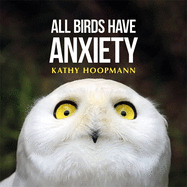 All Birds Have Anxiety
All Birds Have Anxiety
Written by Kathy Hoopman
Jessica Kingsley Publishers, 2017
https://video.link/w/MK2Lc Presented by Disability Pride PA
This book explores the symptoms of anxiety disorder and their impact on day-to-day life through colorful images of life as a bird. It’s humorous yet gentle approach recognizes the stress that anxiety can cause, helping children to better understand how it feels to have anxiety.
Discussion Questions:
- What types of birds are shown in the books? (Hint: There is a list at the back of the book.)
- How do the pictures of birds show different feelings or situations that might be stressful?
- What are some types of anxiety that these birds have? Do you ever feel like that?
- What are some ways the birds deal with their worries?
- Which pictures do you like best? Why?
Additional Activities:
- Look at the pictures in the book and make up your own story about how they are feeling or what they are doing.
- When you see birds outside, see if you can tell what they are thinking by the way they look and move. You can do this with other animals, too.
- Find some pictures of birds or other animals in old magazines or calendars that you have permission to cut up. Use the pictures to make your own book of feelings.
- Buy some bird seed and feed the birds. If you can put up a bird feeder outside you house, it can be fun to watch birds come to the feeder. Or bring some bird seed to a park and feed the birds that are there.
Book Discussion: A Terrible Thing Happened
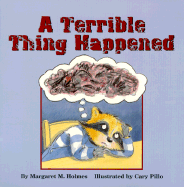 A Terrible Thing Happened
A Terrible Thing Happened
Written by Margaret M. Holmes
Illustrated by Cary Pillo
Magination Press, 2000
https://video.link/w/qf5Lc
Sherman witnessed something terrible, and now he has lots of bad feelings. Talking to someone who understands his feelings helps him deal with the trauma. This book can be helpful for children who experienced severe trauma or violence. Includes a note to parents and caregivers and a list of helpful resources.
Discussion Questions:
- How did Sherman act after seeing the terrible thing?
- How did Ms. Maple help Sherman?
- Did you ever see something terrible that scared you? It can be something you saw in person, on TV, or somewhere else. Did someone tell you about something awful that happened? Was there more than one thing that happened?
- How did you act after seeing or hearing about the terrible thing? How did you feel?
- Have you ever told anyone about the terrible thing(s) you saw or heard about? If yes, did it help? If no, why not? Do you think you could talk about it now?
Additional Activities:
- If you can, draw one or more pictures about what you saw. Draw some pictures about how you feel. Does drawing make you feel better? Why do you think it helps (or not)?
- Find someone you trust and talk to them about the bad thing that happened. If you aren’t ready to talk to a person, talk to a favorite toy or pet.
- When you talk about the bad thing, try to make up a different ending that makes you feel better. How could the bad thing be changed to make it all right?
- Parents and caregivers can look at the information at the back of the book for more ideas.
Book Discussion: Calm Monsters, Kind Monsters
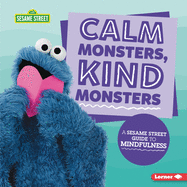 Calm Monsters, Kind Monsters
Calm Monsters, Kind Monsters
Written by Karen Kenney
Featuring the Sesame Street Muppets
Lerner Publications, 2020
https://video.link/w/fi5Lc Presented by Meredith Marco
Cookie Monster and friends present some mindfulness techniques to help children recognize and manage their emotions.
Discussion Questions:
- What does it mean to be mindful? What is belly breathing? (Look at the Glossary in the back of the book for the answer.)
- Do you sometimes have trouble falling asleep? What do you do when this happens?
- What do the characters in the book focus on to help them stop worrying? What are some things you could focus on? Your answers can be different. Maybe a picture of your family, a favorite toy, or something else can help you focus.
- What does positive self-talk mean? What does Cookie Monster say to make himself feel better?
- Why is Rosita sad? What makes her feel better?
- What does it mean to feel frustrated? What does Abby do to feel better?
- How can being thankful make you feel better?
- Where are some of your favorite walking places? How can you be mindful on your walk?
Additional Activities:
- Try doing some belly breathing. Repeat it 10 times. Does it help you to calm down?
- If you have trouble falling asleep, try saying good night to your body parts like the child in the book. Does it help?
- Think of some positive things you can say to yourself if you are worried or upset.
- Try blowing bubbles to help you feel better. Imagine your worries floating away every time to breathe out. Imagine the worries disappearing when the bubbles pop.
- Who are some people that make you feel good? Tell them how thankful you are to have them in your life. You can tell them in person, on the phone, or write to them.
- Take a walk in your neighborhood or another place you like to go. Look around and try to notice things you normally don’t pay attention to. What new things do you see?
Book Discussion: My Monster and Me
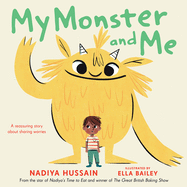 My Monster and Me
My Monster and Me
Written by Nadiya Hussain
Illustrated by Ella Bailey
Viking Books for Young Readers, 2021
https://video.link/w/Dl5Lc
Presented by Children’s Read Alouds by Brittany
A boy’s worries take the form of a big imaginary monster that stops him from doing things he wants to do. But when the boy talks about the monster to his grandmother, he learns how to control it.
Discussion Questions:
- At the start of the book, the author talks about having a panic disorder. Can you guess what that means? Have you ever felt like that?
- Do you ever feel like you have a monster? If so, what does the monster say or do?
- Do you think the yellow monster looks scary? Why does the boy want it to go away?
- What does the boy mean when he says the monster hides from his Mom, brother, and Dad?
- Do you think the boy ever told his brother or parents about the monster? Why did he tell his grandmother?
- Why do you think the monster got smaller when the boy told his grandmother about it?
- Why do you think the boy kept the little monster? Do you think they could become friends?
Additional Activities:
- If you have a monster, draw a picture of what it looks like. If you don’t have a monster, draw a picture of how you feel when you are worried.
- If you have a monster, imagine what you would say to it. If you don’t have a monster, pretend a doll or a stuffed animal (or your drawing) is your monster. Act out a conversation with your monster. Tell it how you feel. What would it say back to you? Does talking to your monster make you feel better?
Book Discussion: The Don’t Worry Book
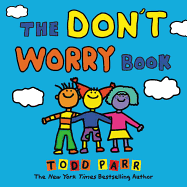 The Don’t Worry Book
The Don’t Worry Book
Written and illustrated by Todd Parr
Little Brown Books for Young Readers, 2019
https://video.link/w/eo5Lc Presented by Kurtz Elementary School
Todd Parr’s kid-friendly pictures of multicultural kids list some reasons children may get worried, and how they can cope with these feelings.
Discussion Questions:
- What do the kids in the book worry about? Do you sometimes worry about these things?
- Are there any worries mentioned in the book that do not bother you? Which ones? Why do you think you are braver about those things?
- What do the kids in the book to get rid of their worries? Have you tried any of these things?
- Who can you talk to if you want to stop worrying? What friends can you visit?
- Do you have a toy that makes you feel better? What kind of toy?
- What are some things that make you feel strong?
Additional Activities:
- Do you ever wear underwear on your head? Try it and see if it makes you feel better.
- Find some books that cheer you up. Go to the library and ask the librarian to help you.
- Dancing is one thing that is recommended. Find some music you like and try dancing to it. Make a list of the music that makes you feel happy. Make up your own happy dance.
- Try doing jumping jacks or other exercises to boost your spirits.
- Draw pictures of some things that make you feel strong.
Book Discussion: The Worrysaurus
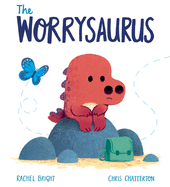 The Worrysaurus
The Worrysaurus
Written by Rachel Bright
Illustrated by Chris Chatterton
Orchard, 2020
https://video.link/w/lq5Lc Presented by Annie’s Workshop
- A little Worrysaurus has plans for a nice picnic, but his busy head dreams up things that threaten to ruin his day.
- Discussion Questions:
- When the Worrysaurus is happy, the pages are nice and bright. How do the pictures change when he starts to worry too much?
- What does it mean to “overthink”? What are some things the Worrysaurus overthinks? How did that make him feel?
- Why did the Worrysaurus think it was stormy and raining? Was it really bad weather?
- What does it mean to feel like you have “a butterfly in your tummy”? Do you ever feel that way? If not, what do you feel like when you are worried?
- How does the Worrysaurus overcome his worries?
Additional Activities:
- Sometimes visualizing your day helps to relieve anxiety. Make a list or draw a picture of what you plan to do for the day.
- Carrying things that make you feel happy is a good idea. Find some easy-to-carry items and make up your own bag or box of happy things.
- Write a letter to yourself (or draw a happy picture) that you can take with you and look at when anxious. You can have other people write or draw happy things for you, too.
- The Worrysaurus has a butterfly inside when he is anxious. What form does your anxiety take? Draw a picture of your worry creature. Then imagine how you might make it less scary.
Book Discussion: Worries Are Not Forever
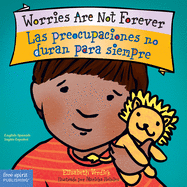 Worries Are Not Forever /Las preocupaciones no duran para siempre
Worries Are Not Forever /Las preocupaciones no duran para siempre
Written by Elizabeth Verdick
Illustrated by Marrieka Heinlen
Free Spirit Publishing, 2020
English: https://video.link/w/Or5Lc Presented by Daycare Team
Spanish: https://video.link/w/9t5Lc Presented by Lawrence Public Library
This colorful board book explains in English and Spanish some worries a child may have and how to make them go away.
Discussion Questions:
- Look at the pictures in the first part of the book. What things cause the children to worry? What else does the author mention that made make kids worry?
- Does it help you feel better to know that worries are not forever? Or that grown-up sometimes have worries, also?
- Using you own words, how could you ask for help?
- What are some activities you can do to make your worries go away?
Additional Activities:
- Think of some exercise you can do to make you feel better. Do them every day!
- On the page that talks about keeping your hands busy – what are those hands doing? What activities, games, or crafts can you do to keep your hands busy?
- One suggested activity is to breathe in slowly like you’re smelling cookies. Maybe you can bake cookies with an adult. Eating them will also help you feel better!
- Do you like to hug family members, friends, or a pet? If so, try doing that when you are worried. Find a soft doll or toy to snuggle.
- Think of some good thoughts. Write them down so you can read them later.
- There are Tips for Parents and Caregivers at the back of for more help with anxiety.
Book Discussion: Tapping Your Way to a Great Big Smile!
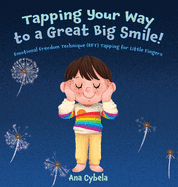 Tapping Your Way to a Great Big Smile!
Tapping Your Way to a Great Big Smile!
Written by Ana Cybela
Illustrated by Widya Arumba
Kinetic Dandelions, 2020
This book explains how children can use Emotional Freedom Technique (EFT) Tapping to help them feel better in various circumstances.
Discussion Questions:
- What emotions or feelings do the children in the book have? Do you ever experience these feelings?
- Look at the pictures. What is going on in the left-side pictures to make the kids feel bad? Do those things bother you, too? How do the pictures on the left side show the kids feel better?
- When you feel bored, nervous, angry, sad, etc., what do you do about it? Does it work or not?
- The children in the book still love themselves, even if they experience difficult emotions. Do you love yourself all the time? Are there sometimes you might not? If so, when?
- Which of the scenes on the book do you relate to the most? Why?
Additional Activities:
- As you read through the book, try the different tapping techniques. There is more information at the back of the book to explain how to do the tapping. Which tapping methods work best for you?
- As you tap, remember to repeat the affirmations – the positive sayings that help you to understand your feelings. Can you think of some other affirmations you can say?
- This video, Tapping for Kids with Allison, shows how to do the tapping exercises: https://video.link/w/0v5Lc Her other videos may also be helpful.
Book Discussion: What To Do When You Worry Too Much
What To Do When You Worry Too Much
Written by Dawn Huebner, Ph.D.
Illustrated by Bonnie Matthews
Magination Press, 2005
Older children can use the exercises in this workbook to help get through a difficult time. Read through the chapters and use a separate piece of paper to do the written activities.
PLEASE DO NOT WRITE IN THIS BOOK!
Discussion Questions & Activities:
- What is the tomato story in Chapter One trying to teach you?
- Chapter Three has some examples of how worries may affect your body. Do you ever feel any of the pains on listed page 23? Do you get different pains? What type?
- Do you think that other people get mad at you when you worry? Who does, and what do they say to you?
- Chapter Four talks about using logic to get rid of worries. Have you tried this?
- What does Chapter Five suggest you do to deal with your worries?
- Chapter Six – How are worries like bullies? What things can you do to keep that bully from bothering you?
- Chapter Seven – What does it mean to re-set your system? Do some of the suggested activities. What works best for you?
- Chapter Eight – Is there anything you used to worry about, but it doesn’t bother you now? How did you get rid of the worry? Did it just go away or did you do something to get rid of it?
- Going forward, what activities or suggestions from this book do you think you will keep using? You can make a chart of your coping skills to see what works best in certain circumstances.

Annotated Bibliography –Coping with Childhood Anxiety
These books are available at the Stratford Library. Links to videos of some of these books read aloud are in blue.
In the Parents’ Collection:
A Feel Better Book for Little Worriers by Holly Brochmann and Leah Bowen (P Development Feelings)
Illustrations and simple, rhyming text provide young children with tools for dealing with feelings of anxiety. https://video.link/w/nU1Lc Presented by Magination Press Story Time
Happy Tapping with Mia & Charlie Energy EFT For Kids by Paula Kennedy (P Development Feelings)
Mia Monkey and Charlie Chameleon help children to learn the magic of Energy EFT, or ‘tapping’ as it is sometimes known. EFT helps to release any negative feelings and replaces them with positive ones.
Breaking Free of Child Anxiety and OCD: A Scientifically Proven Program for Parents by Eli R. Lebowitz (P Development Social)
Lebowitz presents the tools and techniques used in the program along with what to say and how to handle a child with an anxiety disorder.
Bubble Riding: A Relaxation Story by Lori Lite (P Development Feelings)
Children join the sea child and turtle as they take a bubble ride into the world of relaxation. The colorful imagery in this story quiets the mind and relaxes the body so your child can manage stress and fall asleep peacefully.
Don’t Forget to Come Back! by Robie H. Harris (P Development Feelings)
When her parents go out for the evening, a little girl threatens to run off to Alaska, but has a good time with the babysitter instead. https://video.link/w/UW1Lc Presented by Saskia Garel
Gorilla Thumps & Bear Hugs: A Tapping Solution Children’s Story by Alex Ortner (P Development Feelings)
Annabel dreams of one day being a scientist, but teasing from other kids at school has hurt her confidence and left her feeling sad and alone. Join her as she learns how to use the Magical Tapping Technique to quickly release her sadness and regain her confidence. https://video.link/w/iZ1Lc Presented by Laurie Walton
The Invisible String by Patrice Karst (P Development Feelings Fear)
In this heartwarming story, Karst delivers a simple approach to overcoming the fear of loneliness or separation from parents. https://video.link/w/Jc2Lc Presented by SPRIGS Counseling
Lola’s Words Disappeared by Elaheh Bos (P Development Feelings)
As Lola starts school, something strange happens. Her words disappear! Now Lola must find new ways to give her words the courage to come back. A fun and practical introduction for children to different techniques of anxiety management.
The Opposite of Worry: The Playful Parenting Approach to Childhood Anxieties and Fears by Lawrence J. Cohen, Ph.D. (P Family Parenting)
Anxiety can be especially challenging and maddening for children. And since anxiety has a mind of its own, logic and reassurance often fail, leaving parents increasingly frustrated about how to help. This book provides a special set of tools to handle childhood anxiety.
The Playground Problem: A Book About Anxiety by Dr. Tracy Packiam Alloway (P Development Feelings)
Ruby feels anxious about her show and tell presentation. But when she discovers that Joey is having a hard time at lunch, it’s up to Ruby to use her SEN Superpowers to cheer him up.
Seven Steps to Help Your Child Worry Less: A Family Guide for Relieving Worries and Fears by Sam Goldstein, Kristy S. Hagar, Robert Brooks (P Development Feelings)
Practical strategies to help teach children relaxation techniques, correct ways of thinking to combat worry and anxiety, and empowering behavioral interventions.
Small Things by Mel Tregonning (P Development Feelings)
In this wordless graphic picture book, a young boy feels alone with his worries. He isn’t fitting in well at school, his grades are slipping–he’s even lashing out at those who love him.
Stress Free Kids: A Parent’s Guide to Helping Build Self-Esteem, Manage Stress, and Reduce Anxiety in Children by Lori Lite (P Development Feelings Stress)
Relaxation techniques to free children from stress.
The Tallest Bridge in the World: A Story for Children About Social Anxiety by Ellen Flanagan Burns (P Development Social)
Thomas’s parents take him to speak with a counselor, who provides him with tools for coping with feeling uncomfortable around other people.
What to Do When Fear Interferes: A Kid’s Guide to Overcoming Phobias by Claire A. B. Freeland, PhD (P Development Feelings)
This book has ideas to help kids to deal with a phobia, gradually building confidence to face their fear and more challenging situations.
What to Do When You Grumble Too Much: A Kid’s Guide to Negativity by Dawn Huebner (P Development Feelings Negativity)
This book teaches school-age children cognitive-behavioral techniques to reduce and overcome negativity, through writing and drawing activities, and self-help exercises and strategies.
What to Say to Kids When Nothing Seems to Work by Adele Lafrance (P Family Parenting)
This book provides a framework to explore new ways of responding to your child that will help them calm down faster and boost their resilience to stress.
Your Struggling Child: A Guide to Diagnosing, Understanding, and Advocating for Your Child with Learning, Behavior, or Emotional Problems by Robert F. Newby (P Behavior)
Offers parents advice on how they can determine whether or not their child’s behavior, learning, and emotional problems require professional help or if they will simply grow out of them.
Picture Books:
Big Feelings by Alexandra Penfold (PJ Penfold)
This simple book shows how kids can turn their negative feelings to positive ones.
https://video.link/w/Jh2Lc Presented by Storybook Moments
Breathe with Me: Using Breath to Feel Calm, Relaxed, and Happy by Mariam Gates (PJ Gates)
Teach kids fun and easy breathing practices based on the proven methods of yoga and mindfulness meditation. Through visualization and play, children learn an essential set of self-care skills that will benefit them for a lifetime.
https://video.link/w/Bk2Lc Presented by Sounds True
The Good Egg by Jory John (PJ John)
When the other eggs in his carton behave badly, the good egg feels like he needs to be perfect.
https://video.link/w/qr2Lc Presented by The Joyful Bookshelf
Heroes Wear Masks: Elmo’s Super Adventure by Lillian Jane (PJ Sesame Street)
Elmo and his mommy help children combat school anxiety and understand new experiences like wearing masks, frequent hand washing, and social distancing. School Superhero reminds readers that it’s super to help everyone stay healthy.
https://video.link/w/6t2Lc Presented by Bookworm Storytime
I Am Peace: A Book of Mindfulness by Susan Verde (PJ Verde)
A child starts to get carried away with worry and rushing thoughts before taking a breath, steadying, observing thoughts, feeling kindness, feeling thankful, and experiencing the world. https://video.link/w/tv2Lc Presented by KidLit TYV
I Used to Be Afraid by Laura Vaccaro Seeger (PJ Seeger)
This book explores the many forms fear can take and the importance of overcoming it.
Jitterbug Jam by Barbara Jean Hicks PJ Hicks)
A Monster named Bobo is of the boy who is underneath his bed, until Boo-Dad tells him what to do.
King Calm: Mindful Gorilla in the City by Susan D. Sweet (PJ Sweet)
Marvin is a calm and mindful gorilla living peacefully in the city, enjoying every minute of his day, unlike his sassy, curt, irreverent former Empire State-climbing Grandpa.
https://video.link/w/4z2Lc Presented by Dixy’s Storytime World
Lena’s Shoes Are Nervous: A First-Day-of-School Dilemma by Keith Calabrese (PJ Calabrese)
Lena is excited about starting kindergarten but her favorite shoes are not until, with the help of her father and a very special headband, she convinces the shoes–and herself–to be brave. https://video.link/w/W12Lc Presented by Ms. Sar’s Read Aloud
Mrs. Gorski, I think I Have the Wiggle Fidgets by Barbara Esham (PJ Esham)
David Sheldon finds it difficult to pay attention and follow directions. His teacher, Mrs. Gorski, has had enough of David’s brainstorms, but David “brainstorms” a way to manage his “wiggle fidgets.”
https://video.link/w/o52Lc Presented by Chris Castellarin
My Somebody Special by Sarah Weeks (PJ Weeks)
A youngster experiences the emotions of being the last to be picked up at school.
https://video.link/w/R62Lc Presented by Goofy Ruby
Puppy in My Head: A Book About Mindfulness by Elise Gravel (PJ Gravel)
Ollie is the puppy living inside of the narrator’s head. When Ollie panics or is too energetic, the narrator feels that way, too! But she learns to handle the situation with her breath and her mindfulness, and by talking it out with an adult.
https://video.link/w/182Lc Presented by Experience UGA
The Rabbit Listened by Cori Doerrfeld (PJ Doerrfeld)
When Taylor’s block castle is destroyed, all the animals think they know how to make him feel better, but only the rabbit quietly listens to how Taylor is feeling.
https://video.link/w/rA2Lc Presented by Shon’s Stories
Roar & Sparkles Go to School by Sarah Beth Durst (PJ Durst)
A story about the anxieties children may feel about attending school for the first time, as well as a tale about the bond between siblings.
https://video.link/w/6D2Lc Presented by Rebekah Kendrick
Scaredy Squirrel by Mélanie Watt (PJ Watt)
Scaredy Squirrel never leaves his nut tree because he’s afraid of the unknown. But something unexpected happens that may just change his outlook.
https://video.link/w/CE2Lc Presented by Weston Woods
Small Knight and the Anxiety Monster by Kasha Manka (PJ Manka)
A Small Knight must go on a magical quest to defeat an Anxiety Monster in this adorable, heartfelt picture book.
There Might Be Lobsters by Carolyn Crimi (PJ Crimi)
A little dog’s paralyzing anxiety gives way to bravery when someone smaller arrives in need during a whooshy, splashy, overwhelming day at the beach.
https://video.link/w/zF2Lc Presented by Brenda Sewell
The Uncorker of Ocean Bottles by Michelle Cuevas (PJ Cuevas)
The whimsical story of a man who has spent his life delivering the messages found in ocean bottles, and the day he receives a message that turns out to be a party invitation.
https://video.link/w/tG2Lc Presented by Coos Bay Public Library
Wemberly Worried by Kevin Henkes (PJ Henkes)
A mouse named Wemberly, who worries about everything, finds that she has a whole list of things to worry about when she faces the first day of nursery school.
https://www.youtube.com/watch?v=tkuXc0htNGk Presented by The Fable Fairy
The Worry Box by Suzanne Chiew (PJ Chiew)
Murray Bear has so many worries. His sister Molly tells him how to use a worry box to help him control his anxiety.
Easy Nonfiction:
Worrying Too Much: Learning How to Manage Stress by Alyssa Krekelberg (E About Me: Feelings)
Teaches young readers how to handle and manage stress in a positive way.
J Fiction:
Alvin Ho series by Lenore Look (J Look)
Alvin is “allergic” to so many things in this humorous series.
Donutheart by Sue Stauffacher (J Stauffacher)
Usually preoccupied with concerns about hygiene and safety, sixth-grader Franklin Delano Donuthead finds that he is also worried about his mother’s feelings and his friend Sarah’s difficult home life.
Justin Case: Shells, Smells, and the Horrible Flip-Flops of Doom by Rachel Vail (J Vail)
Justin is trying very hard not to be a worried kid anymore, especially when it comes to making friends at camp, including a new kid who is kind of…rough. After all, Justin is going to be in fourth grade. It’s time to be brave. Right?”
Sixth Grade Sleepover by Eve Bunting (J Bunting)
Janey worries that the sixth grade Rabbit Reading Club’s all-night sleepover will expose her fear of the dark, but it turns out that she is not the only member with a secret.
Umbrella Summer by Lisa Graff (J Graff)
After her brother Jared dies, ten-year-old Annie worries about the hidden dangers of everything, from bug bites to bicycle riding, until she is befriended by a new neighbor who is grieving her own loss.
The Worry Website by Jacqueline Wilson (J Wilson)
Mr. Speed creates a website on which his students can anonymously type their worries and get feedback from their classmates, which helps them sort out everything from pimples to stepfamily problems.
J Nonfiction:
All About Anxiety by Carrie Lewis (J155.4 Lewis)
What causes anxiety and what can we do about it? Readers will learn what’s going on in their brain and central nervous system when they feel anxious and discover new strategies to manage their anxiety.
Anxiety: Deal with It Before It Ties You Up in Knots by Joey Mandel (J152.46 MANDEL)
This accessible book helps all kids understand anxiety better and offers practical ideas for coping.
Crafting Calm: Art and Activities for Mindful Kids by Megan Borgert-Spaniol (J158.1 Borgert-Spaniol)
Mindfulness is a powerful practice to help kids find calm in the midst of everyday stress. In this book, kids engage in and practice mindfulness through fun and easy exercises.
Name & Tame Your Anxiety: A Kid’s Guide by Summer Batte (J155.4 Batte)
A book to help kids understand and manage anxiety, with specific information for kids diagnosed with an anxiety disorder.
Outsmarting Worry: An Older Kid’s Guide to Managing Anxiety by Dawn Huebner (J155.4 Huebner)
This book “presents strategies for 9-13 year olds with anxiety. It teaches them about a specific set of skills that makes it easier to face and overcome worries and fears, and normalizes their symptoms providing a set of concrete steps to overcome them. The tried and tested techniques are based on the most up-to-date psychological treatments of anxiety, including CBT and ACT
Phobias by Gail B. Stewart (J616.85225 S849P)
Explains phobias using real-world examples and first-person accounts.
School Made Easier: A Kid’s Guide to Study Strategies and Anxiety-Busting Tools by Wendy L. Moss (J371.3 Moss)
This book teaches students ways to avoid becoming emotionally overwhelmed with school and extracurricular activities so they can reduce their anxiety.
Stress Can Really Get on Your Nerves! by Trevor Romain (J155.9 R757S)
Uses silly jokes and light-hearted cartoons along with serious advice to help readers recognize the causes of stress and its effects and learn how to handle worry, anxiety, and stress.
Worry – How to Feel Less Stressed and Have More Fun by Judy Woodburn (J155.9 Woodburn)
This book is packed with proven techniques for handling worry and creating confidence–freeing you to be the girl you’re meant to be
Graphic Novels:
Guts by Raina Telgemeier (J Comic Telgemeier)
Raina wakes up one night with a terrible upset stomach. It isn’t going away–and it coincides with her worries about food, school, and changing friendships. What’s going on?

Additional Resources – Coping with Childhood Anxiety
Here are links to more information that you can print out.
Healthy Thinking for Younger Children
https://www.anxietycanada.com/sites/default/files/Healthy_Thinking_for_Younger_Children.pdf
These activities go with Healthy Thinking for Younger Children:
What Am I thinking? Activity sheets:
https://www.anxietycanada.com/sites/default/files/What_am_I_Thinking.pdf
Thoughts > Feelings:
https://www.anxietycanada.com/sites/default/files/Thoughtsandfeelings.pdf
Developing and Using Cognitive Coping Cards:
https://www.anxietycanada.com/sites/default/files/coping_cards.pdf
The STOP Plan handout
https://www.anxietycanada.com/sites/default/files/The_STOP_Plan_handout.pdf
Realistic Thinking for Teens
https://www.anxietycanada.com/sites/default/files/RealisticThinking_Teens.pdf
These activities go with Realistic Thinking for Teens:
Realistic Thinking form:
https://www.anxietycanada.com/sites/default/files/Realistic_Thinking_Form.pdf
Challenge Negative Thinking:
https://www.anxietycanada.com/sites/default/files/Challenging_Negative_Thinking.pdf
Thinking Traps:
https://www.anxietycanada.com/sites/default/files/ThinkingTraps.pdf
Free Parent’s Guide to a Growth Mindset
Welcome Big Life Journal
https://biglifejournal.com/blogs/blog/big-life-journal-guide-growth-mindset
Could My Child Benefit from Counseling?
Stratford Community Services
https://www.stratfordct.gov/filestorage/39832/39846/39915/116882/Could_my_Child_benefit_from_Counseling_-07-2020.pdf
